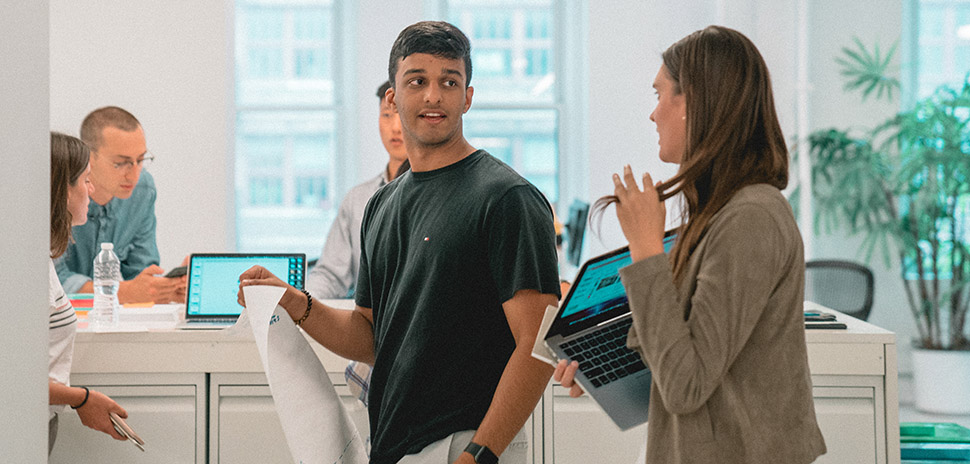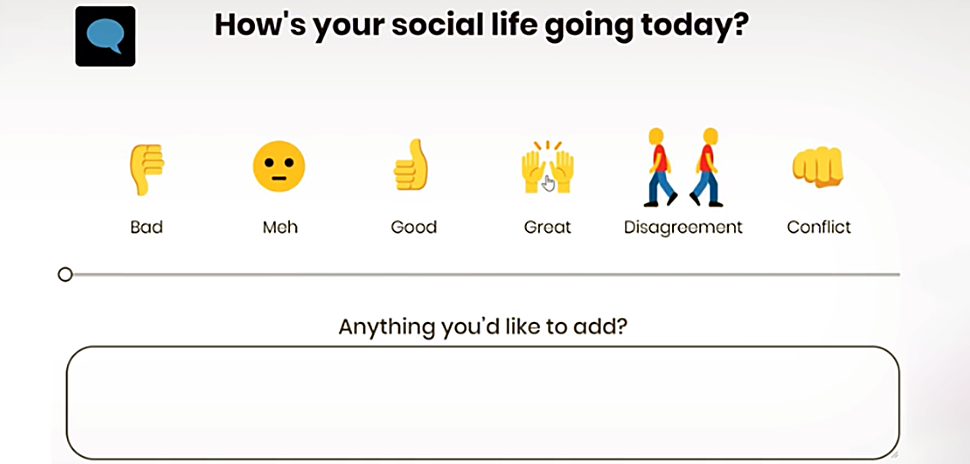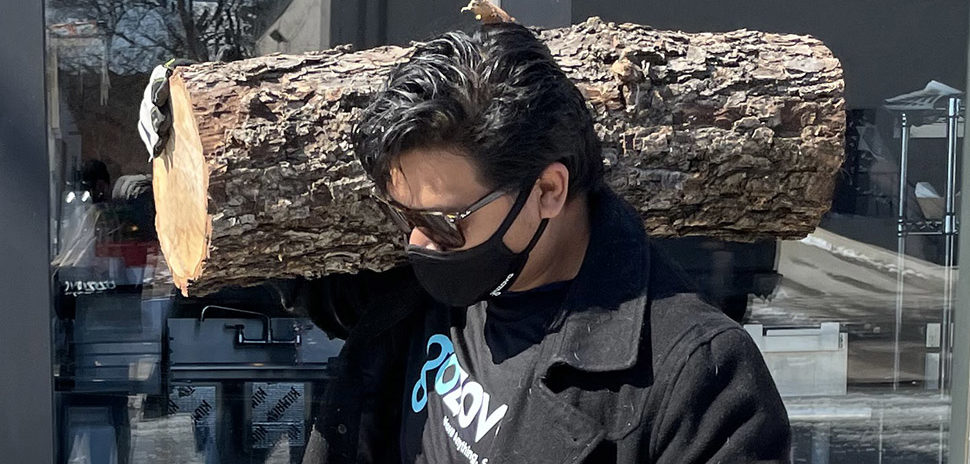Would you use Uber or Lyft for the 200-mile trip between Austin and Dallas? What if it was more affordable?
The promise of new modes of city-to-city travel continues to emerge, from rideshare to high-speed rail. Hitch aims to be the company to revolutionize travel in this space, a goal it has already found success in across Texas.
The idea for Hitch came to 22-year-old Kush Singh, the startup’s co-founder and now CEO, in 2016 before starting college. As a student traveling frequently between Austin and Dallas on a tight budget, he realized there are hundreds of people taking buses and trains who would rather be taking cars—but they didn’t have the option to do so. There are also hundreds of people who drive between the cities regularly with empty seats in their cars.
An Uber-like option for city-to-city travel
Singh’s idea was to connect these groups to each other, giving frequent commuters the opportunity to become registered and make money, while providing everyone else with a practical, comfortable, Uber-like option for longer distance travel.
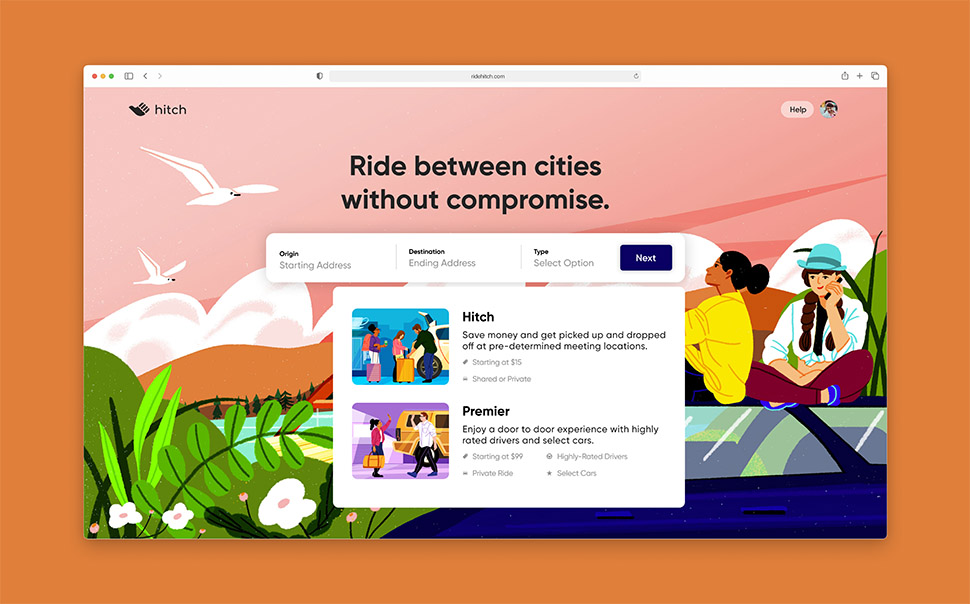
[Image: Hitch]
Singh started at UT Austin in 2017, where he met his future co-founders, three other student-entrepreneurs with a passion in the transportation tech space. In 2019, Hitch was finally launched and began operating.
Throughout the pandemic, the company solidified its presence throughout Texas, as people stopped using public transportation and were willing to try alternatives.
But even before COVID, the need for a new intercity travel option was large.
In the zero to twenty-mile range there are scooter rentals Lime and Bird, and in the five to twenty-mile range well-known rideshare companies Uber and Lyft, among others. For longer distances, traditional options can become too expensive. What’s left is public transportation.
“I very quickly realized that intercity buses really only represent about two to five percent of total trips taken between cities on an annual basis,” Singh says.
More than 90 percent of intercity trips are done via passenger vehicle, and more than 80 percent of those trips are made up of one passenger driving their own car, according to Singh. So,there’s a large capacity of empty car space moving between cities, and a large number of people taking a series of buses who would rather be sitting in a car.
Intercity travel inspiration
Inspired by the spirit of hitchhiking, the name Hitch was born. According to Singh, hitchhiking was actually one of the safest ways to travel in the 1900s, despite popular belief.
“If you talk to the previous generation about their experiences with hitchhiking, there’s this entire romantic side to that, and the conversations and the people that you’ve gotten to meet, and this sort of willingness to help somebody,” Singh says.
Unlike hitchhiking, though, Hitch runs full background checks on its drivers to establish trust between passengers and drivers.
The app also provides an option for same-day, intercity delivery of goods.
How Hitch rides work
Through Hitch’s standard option, riders can share a ride by taking one of several cars departing from Texas cities every day, at prices as low as $15 per ride. Hitch Premier is where you can get access to private rides and a door-to-door experience, with prices starting at $79.
These prices compare to Uber’s approximately $800 ride from Austin to Dallas, and approximately $700 from Austin to Houston.
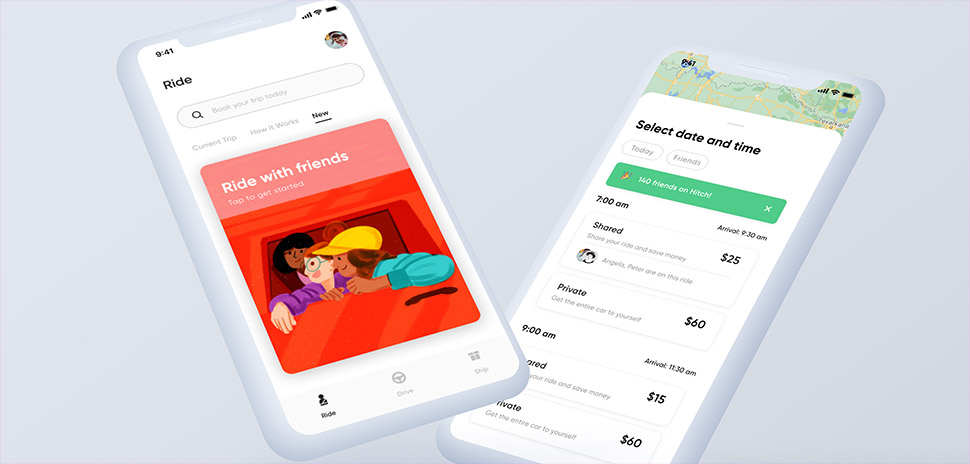
[Image: Hitch]
Hitch is growing quickly, by about 55 percent month over month. But when the company was just starting out, it was sweat equity that kept it going.
First-hand driver experience
“The first app went live, and the driver was me,” Singh says. “It was me borrowing a friend’s car and doing about 20 to 30 thousand miles worth of trips myself, since we didn’t have any money to approve drivers at the time.” Pretending not to be the CEO of the company, Singh was learning about the drivers’ experience first hand.
It quickly became clear to the entrepreneur that he could not be a full-time student while helping Hitch reach its potential as a company. “The second that we took outside capital, and somebody invested in the company itself,” Singh remembers, “I felt a much greater sense of responsibility.”
The capital raise was enough to start hiring full-time employees, something Singh did not feel comfortable doing without the CEO being fully committed to the company first.
Building the intercity rideshare model
During his time as driver, Singh’s goal was to create demand, which he decided to do at college campuses, where students travel between cities and send packages to and from home while on tight budgets.
As demand was slowly being built, Singh found local drivers to step in for him. And as demand picked up, the incentive for drivers to drive for Hitch increased, and the word about driving for Hitch spread organically across the state.
Most of the original funding for Hitch, which came from private investors, was put towards building demand in Texas.
Now, the company is attracting drivers even while the driving gig economy is shrinking, because of its unique model and intimate knowledge of the job.
Many of Hitch’s drivers are “natural” drivers, who make the trips they are being paid for anyway. “We’ve just made it really, really easy for that driver to not have detours out of their route,” said Singh.
Registered drivers are also guaranteed pay every time they are making a planned Hitch drive, in contrast to other, less formal platforms that operate more closely to a ‘Craigslist for carpooling’ without guarantees, according to Singh.
Pandemic demand for premium services
Not only did the pandemic help Hitch grow, but it dramatically shifted demand towards Hitch Premium. The percentage of Hitch’s passengers using premium pre-pandemic was 10 percent and has since climbed to 60 percent, a trend that Singh says has remained consistent even as vaccination levels rise and COVID-19 cases drop.
Most exciting are the transformations that Singh sees in the future of Hitch and the private transportation sector as a whole.
First is a greater focus on the supply side of the industry and on drivers’ benefits. “There’re lots of national conversations about employment versus dependent contractors,” said Singh. “And then in the medium to long term, it’s about how do you create a sort of hybrid model between paid drivers versus autonomous vehicles.”
What about autonomous vehicles?
Although he believes that autonomous vehicles will take longer to infiltrate the mainstream than people might think, he says that transportation services need to work with autonomous vehicles in mind. The increase in electric vehicles can also influence which business model to use, something he says Hitch is thinking about now. “It’s about building and creating the network for that to actually exist,” he said.
Even longer-term, models like Hitch’s will help get cars off of the road and help underutilized resources reach their potential value.
“We have deserved better interstate transportation for a long time, and it’s been an undercapitalized and underserved market forever,” said Singh. “We really want to be the household name for 50 to 350 miles’ intercity side.”
![]()
Get on the list.
Dallas Innovates, every day.
Sign up to keep your eye on what’s new and next in Dallas-Fort Worth, every day.

